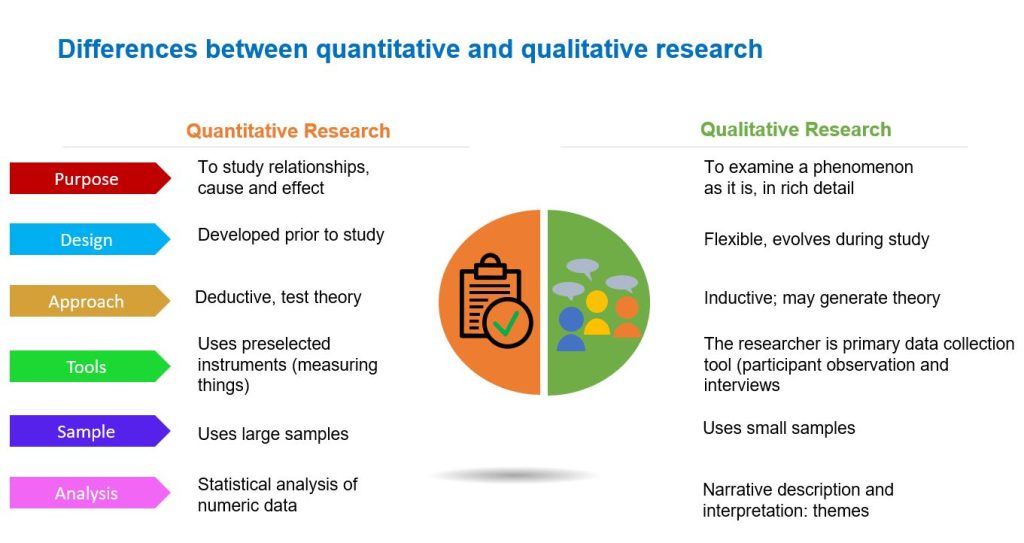1.4 Types of Research
The choice of research philosophy determines the approach a researcher would use. The approaches in research are deductive and inductive reasoning. Deductive reasoning is derived from the word deduce, which means to conclude by thinking about known facts. Deductive reasoning is the approach used in quantitative research. Research using this approach.20 Deductive reasoning is linked with the positivism paradigm. This approach involves systematically collecting, analysing, and interpreting data to draw inferences.20 In simple terms, the deductive researcher uses the top-down approach that uses data to test a theory or hypothesis and gather knowledge (adding, qualifying, or contradicting the scientific meaning).20
In contrast, inductive reasoning moves from specific observations to broader theories and generalisations.20 Inductive reasoning is commonly employed in qualitative research and focuses on specific observations, identifies patterns and uncovers conceptual relationships that could be explored to generate themes or a theory based on the data collected.20 Inductive reasoning uses a bottom-up approach and it is linked with constructivism/interpretivism paradigm.
Distinguishing Features of Quantitative, Qualitative, and Mixed Methods Research
There are three main research methodologies – quantitative, qualitative and mixed methods. Quantitative research seeks to investigate and understand the relationship between different variables.21 It is concerned with employing numerical data to systematically examine the phenomenon under investigation. As a result, quantitative research relies on measurement and makes the assumption that the phenomena being studied can be quantified. It aims to analyse data for patterns and validate the measurements by using statistical methods to draw conclusions about the likelihood of the numbers measured/sampled being widely representative. While it effectively measures quantifiable things like height and weight, measuring other things, like what people think or feel, is more challenging.21 This is where qualitative research is required.
Qualitative research is a naturalistic type of inquiry that deals with non-numerical data. Instead of attempting to explain and manipulate factors, qualitative research aims to explore and comprehend the factors.22 For example, it can be used to understand people’s perceptions of a particular concept or phenomenon. It emphasises the process or patterns of development rather than the result or output of the research since it is contextualised and interpretive.22 Data collection methods in qualitative research include interviews, field notes, diaries, and observations. Data are gathered and qualitatively analysed in pure qualitative research.22
Mixed method research, on the other hand, involves a combination of both quantitative and/ or qualitative methods.23 The methodology requires a purposeful mixing of the approaches required in the data collection, data analysis and interpretation of the research. The features of both qualitative and quantitative methods are integrated into this research methodology.23
Figure 1.2 presents the differences between quantitative and qualitative research. These methodologies will be explicitly discussed in subsequent chapters.


